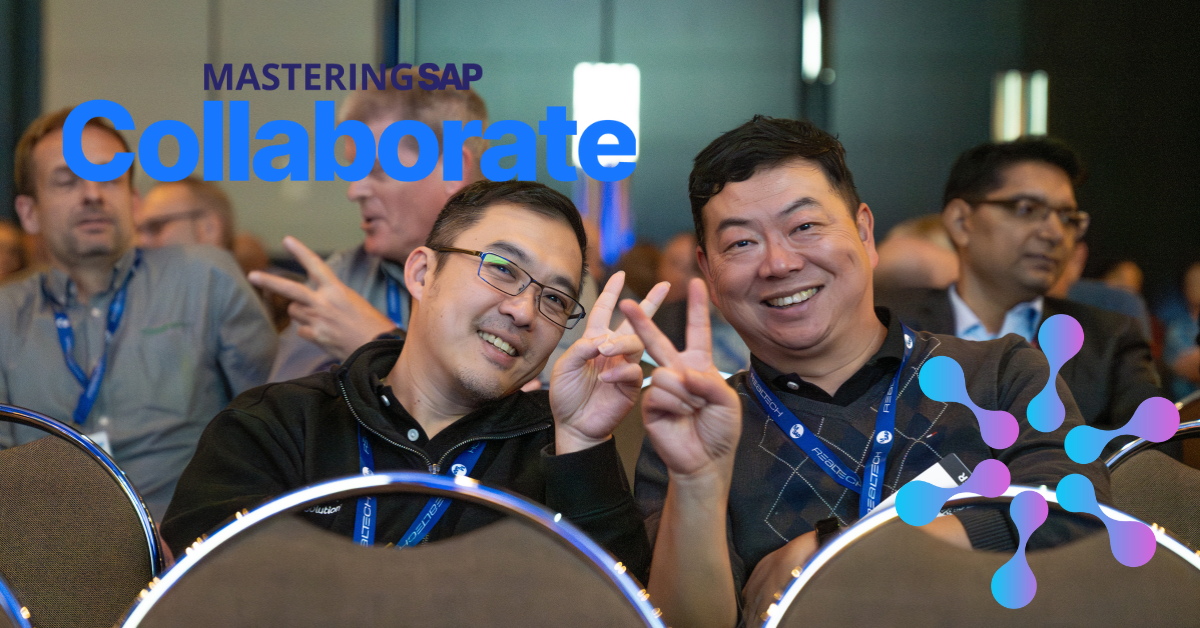PwC Global Digital Procurement Survey reveals that 61% of procurement professionals are keeping focus on cost reduction (37%) and strategic sourcing (24%). While the key initiatives to secure the supplies include building partnerships with suppliers, onshoring strategic suppliers, and reviewing supplier panels to find alternative sources, process optimization has been cited as the key driver of digitization for the procurement teams
1.
Control, process visibility, contract management, and regulatory compliance are the core elements of procurement in the supply chain. However, a lack of even one often becomes a catalyst for revenue leakage. Procurement teams often work with siloed, fragmented procurement processes. Most struggle with manual or obsolete procure-to-pay digital tools that directly affect contract management and compliance.
Organizations are increasingly looking for ways in which they can procure products or services in a cost-effective way. However, with multiple products or service categories and requirements in an organization’s portfolio, a one-size-fits-all purchasing strategy does not always work. Procurement professionals often wrestle with efforts to mitigate risks and costs that surface due to supply chain inflexibilities. Transparency and visibility into pricing, billing, and deliverables can improve profitability to a great extent. But how can organizations streamline their procurement processes? The solution to effective procurement is buying channels.
Optimized P2P Process With Buying Channels
A buying channel is a process that specifies a need, identifies the supplier that fulfills the need, determines the terms of procurement, and implements the purchase. It standardizes tools, processes, and people through whom an organization procures goods or services, and includes processes like requesting, purchasing, approving, receiving, and paying for products or services.
A buying channel strategy defines concrete ways to standardize processes and drive compliance. Organizations without a buying channel strategy in place function in an environment that overlooks contract compliance and utilization for fulfilling customer requests. This cannot only dilute an organization’s leverage to negotiate on pricing agreements but can also jeopardize future contracts.
 Types of Buying Channels
Types of Buying Channels
Buying channels can vary by organization, based on technological capabilities, strategic goals, and operational goals. Below are some of the typical buy channels used by organizations.
Invoice Only: A non-PO channel used for purchases where a purchase order is not required and/or practical (e.g., lease transactions, government/regulatory transactions) and contract pricing is not in place. Since no systematic commitment authorization or back-end price compliance mechanisms exist, usage of this channel should be reduced to a limited basis over time.
Corporate Card: A non-PO channel used for purchasing low-value, non-strategic goods and services, expenses, and fuel with approved suppliers. May include either a corporate debit card, which deducts cash directly from a company’s bank account, or a credit card. Provides greater visibility than is available with invoice only.
Invoice Against Contract: A non-PO channel to be used for designated categories or suppliers where contract pricing is in place. Users can spend against the supplier contract via direct order to the supplier without using a PO. Therefore, cost control and compliance mechanisms are in place when invoicing occurs.
Purchase Order: This PO channel is used for one-time purchases where a purchase order is required (all controllable materials and other materials and services not allowed under non-PO channels) and the purchase is not covered by an existing catalog or outline agreement. A standard PO purchase may or may not be tied to a contract. Where contract pricing is not available, it is typical to involve buyers from a supply chain organization. This channel provides both upfront authorization control and commitment visibility. Demand input can derive from MRP outputs or ad-hoc demand.
Outline Agreement/PO Contract: This PO channel is used for purchases where there is a long-term relationship with a supplier for a specific set of materials or services. The outline agreement allows the organization to negotiate binding contract terms (i.e., price, quantity, discounts, etc.) and execute purchase order releases when the goods and services are required. An outline agreement includes two forms: a contract or a scheduling agreement. A contract allows users to auto-generate and send a PO based on their present needs, while a scheduling agreement will generate a release to a supplier on a regular schedule.
Catalog: A PO channel that is used to purchase standardized products and services with preferred suppliers through an internal or external catalog at contracted prices. All relevant information is known in the catalog application (e.g., item, supplier, price, cost center, etc.). After approval (if required based on financial thresholds), the shopping cart can be automatically converted into a purchase order without the intervention of a buyer. Internal catalogs can be used for stock items with material masters.
Mapping spend to the correct buy channel is done at a category or subcategory level to increase clarity to both end users and suppliers and how an organization plans to engage for that type of purchase. Driving factors in determining mapping categories to channels include:
- transaction volume
- spend volume
- value per transaction
- risk profile of the category
- risk appetite for the category
- technology landscape
- planning of the purchase
The selection of buy channels for an organization should be done when making other organizational choices, including supply chain group maturity and size, technology, and spending profile (categories, current organizational structures, etc.). Purchase validations, such as goods receipts, service entry sheets, or two-way matches, should be defined by buy channel and category, based on the type and value of the purchase.
Buying Channel Strategy
As procurement organizations continue to evolve with the evolving business needs, a buy channel strategy can serve as a blueprint for the source to pay process success. “A buying channel strategy drives success because it optimizes different types of buys based on the needs of the organization. A buying channel strategy gives an answer to the questions ‘how should I procure this?’ and gives different answers based on the type of transaction—giving flexibility as well as control where the organization needs it. As business needs change, different categories of spend can move to different buying channels, helping to reduce rogue spend and keep the organization nimble,” noted Jason Shirazi, Director, PwC.
Building a Buying Channel Strategy - Key Considerations
Buying channel strategy relies on how an organization determines how materials and services will be procured. It is about selecting the buying channels the organization will use and establishing the rules and controls for procuring things via each buying channel. When building a buying channel strategy, organizations should consider the following:
- Process complexity: Defines the amount of time and informational exchanges between team members and across teams.
- Governance: Defines how controls are put in place to ensure that policies are enforced and rogue spend is prevented.
- Compliance Effort: Defines the manual effort required per purchase to make the purchase in a compliant manner.
- Visibility: The ability for all relevant parties (LOBs, supply chain, AP, leadership) to view the spend at all points in the process.
- User Adoption: The required effort to successfully onboard and train users to complete the process as directed.
- Technological Complexity: Defines the required technology to implement. This can be highly dependent on the organization’s existing technical landscape.
- Supplier enablement: The ease with which a supplier can be onboarded to using the buy channel.
- One-Time Supplier Enablement: The ease with which the buy channel can be used with a one-time supplier.
- Ongoing Maintenance: Defines the amount of effort to maintain the buy channel over time, considering training, sourcing, contracts, catalogs, policy, and technology.
- Price stability: Defines the variability of prices through the buy channel over time with a single supplier.
- Pre-approval: Defines whether the buy channel is subject to spend approval prior to the expenditure.
Conclusion
“One enterprise-wide buy channel strategy can work for organizations as buying channels divide spend based on classification/control needs and applies across spend categories and business segments,” notes Shirazi. It also fits into procurement transformation work, as a buying channel strategy is a leading piece of procurement transformation, guiding the tools and organizational structures that are needed to support the buying channels.
PwC is helping organizations with buy channels to make the procurement process more efficient. When implementing a procurement transformation, PwC analyzes our clients’ current buying channels and spend profile, and helps update and add new buying channels and the types of procurement that flow through. This is based on the organization’s risk tolerance, procurement organization maturity, and needs, and business maturity and needs.
1 PwC Global Digital Procurement Survey, 4th edition
 Types of Buying Channels
Buying channels can vary by organization, based on technological capabilities, strategic goals, and operational goals. Below are some of the typical buy channels used by organizations.
Invoice Only: A non-PO channel used for purchases where a purchase order is not required and/or practical (e.g., lease transactions, government/regulatory transactions) and contract pricing is not in place. Since no systematic commitment authorization or back-end price compliance mechanisms exist, usage of this channel should be reduced to a limited basis over time.
Corporate Card: A non-PO channel used for purchasing low-value, non-strategic goods and services, expenses, and fuel with approved suppliers. May include either a corporate debit card, which deducts cash directly from a company’s bank account, or a credit card. Provides greater visibility than is available with invoice only.
Invoice Against Contract: A non-PO channel to be used for designated categories or suppliers where contract pricing is in place. Users can spend against the supplier contract via direct order to the supplier without using a PO. Therefore, cost control and compliance mechanisms are in place when invoicing occurs.
Purchase Order: This PO channel is used for one-time purchases where a purchase order is required (all controllable materials and other materials and services not allowed under non-PO channels) and the purchase is not covered by an existing catalog or outline agreement. A standard PO purchase may or may not be tied to a contract. Where contract pricing is not available, it is typical to involve buyers from a supply chain organization. This channel provides both upfront authorization control and commitment visibility. Demand input can derive from MRP outputs or ad-hoc demand.
Outline Agreement/PO Contract: This PO channel is used for purchases where there is a long-term relationship with a supplier for a specific set of materials or services. The outline agreement allows the organization to negotiate binding contract terms (i.e., price, quantity, discounts, etc.) and execute purchase order releases when the goods and services are required. An outline agreement includes two forms: a contract or a scheduling agreement. A contract allows users to auto-generate and send a PO based on their present needs, while a scheduling agreement will generate a release to a supplier on a regular schedule.
Catalog: A PO channel that is used to purchase standardized products and services with preferred suppliers through an internal or external catalog at contracted prices. All relevant information is known in the catalog application (e.g., item, supplier, price, cost center, etc.). After approval (if required based on financial thresholds), the shopping cart can be automatically converted into a purchase order without the intervention of a buyer. Internal catalogs can be used for stock items with material masters.
Mapping spend to the correct buy channel is done at a category or subcategory level to increase clarity to both end users and suppliers and how an organization plans to engage for that type of purchase. Driving factors in determining mapping categories to channels include:
Types of Buying Channels
Buying channels can vary by organization, based on technological capabilities, strategic goals, and operational goals. Below are some of the typical buy channels used by organizations.
Invoice Only: A non-PO channel used for purchases where a purchase order is not required and/or practical (e.g., lease transactions, government/regulatory transactions) and contract pricing is not in place. Since no systematic commitment authorization or back-end price compliance mechanisms exist, usage of this channel should be reduced to a limited basis over time.
Corporate Card: A non-PO channel used for purchasing low-value, non-strategic goods and services, expenses, and fuel with approved suppliers. May include either a corporate debit card, which deducts cash directly from a company’s bank account, or a credit card. Provides greater visibility than is available with invoice only.
Invoice Against Contract: A non-PO channel to be used for designated categories or suppliers where contract pricing is in place. Users can spend against the supplier contract via direct order to the supplier without using a PO. Therefore, cost control and compliance mechanisms are in place when invoicing occurs.
Purchase Order: This PO channel is used for one-time purchases where a purchase order is required (all controllable materials and other materials and services not allowed under non-PO channels) and the purchase is not covered by an existing catalog or outline agreement. A standard PO purchase may or may not be tied to a contract. Where contract pricing is not available, it is typical to involve buyers from a supply chain organization. This channel provides both upfront authorization control and commitment visibility. Demand input can derive from MRP outputs or ad-hoc demand.
Outline Agreement/PO Contract: This PO channel is used for purchases where there is a long-term relationship with a supplier for a specific set of materials or services. The outline agreement allows the organization to negotiate binding contract terms (i.e., price, quantity, discounts, etc.) and execute purchase order releases when the goods and services are required. An outline agreement includes two forms: a contract or a scheduling agreement. A contract allows users to auto-generate and send a PO based on their present needs, while a scheduling agreement will generate a release to a supplier on a regular schedule.
Catalog: A PO channel that is used to purchase standardized products and services with preferred suppliers through an internal or external catalog at contracted prices. All relevant information is known in the catalog application (e.g., item, supplier, price, cost center, etc.). After approval (if required based on financial thresholds), the shopping cart can be automatically converted into a purchase order without the intervention of a buyer. Internal catalogs can be used for stock items with material masters.
Mapping spend to the correct buy channel is done at a category or subcategory level to increase clarity to both end users and suppliers and how an organization plans to engage for that type of purchase. Driving factors in determining mapping categories to channels include:





